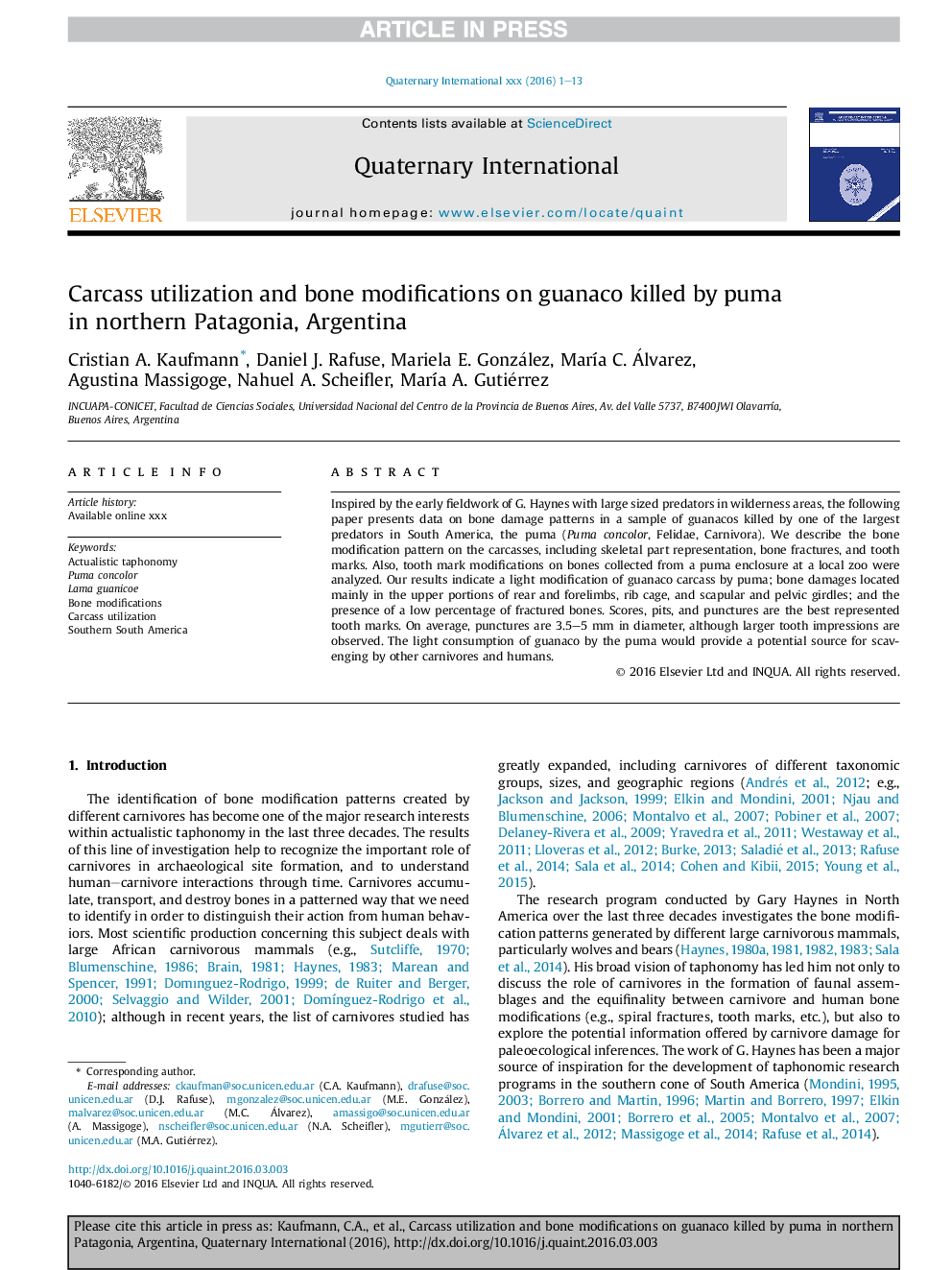| Article ID | Journal | Published Year | Pages | File Type |
|---|---|---|---|---|
| 7450635 | Quaternary International | 2018 | 13 Pages |
Abstract
Inspired by the early fieldwork of G. Haynes with large sized predators in wilderness areas, the following paper presents data on bone damage patterns in a sample of guanacos killed by one of the largest predators in South America, the puma (Puma concolor, Felidae, Carnivora). We describe the bone modification pattern on the carcasses, including skeletal part representation, bone fractures, and tooth marks. Also, tooth mark modifications on bones collected from a puma enclosure at a local zoo were analyzed. Our results indicate a light modification of guanaco carcass by puma; bone damages located mainly in the upper portions of rear and forelimbs, rib cage, and scapular and pelvic girdles; and the presence of a low percentage of fractured bones. Scores, pits, and punctures are the best represented tooth marks. On average, punctures are 3.5-5Â mm in diameter, although larger tooth impressions are observed. The light consumption of guanaco by the puma would provide a potential source for scavenging by other carnivores and humans.
Related Topics
Physical Sciences and Engineering
Earth and Planetary Sciences
Geology
Authors
Cristian A. Kaufmann, Daniel J. Rafuse, Mariela E. González, MarÃa C. Álvarez, Agustina Massigoge, Nahuel A. Scheifler, MarÃa A. Gutiérrez,
